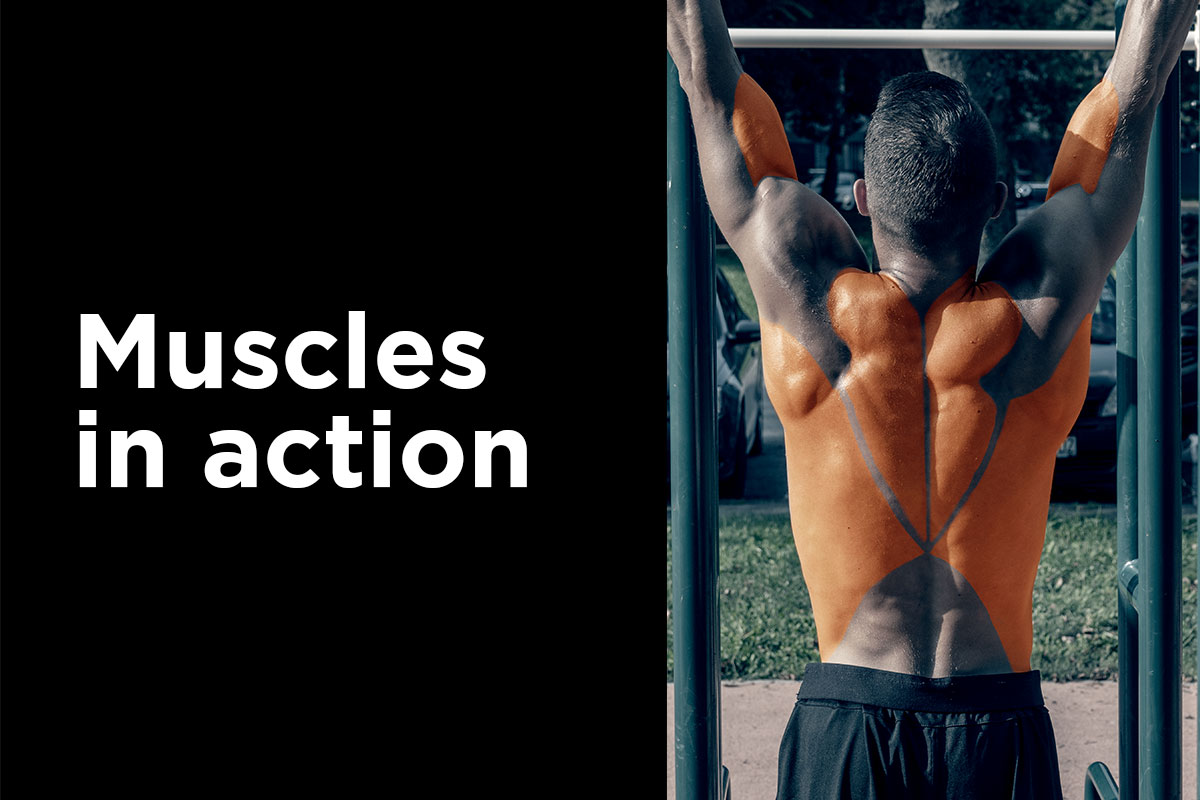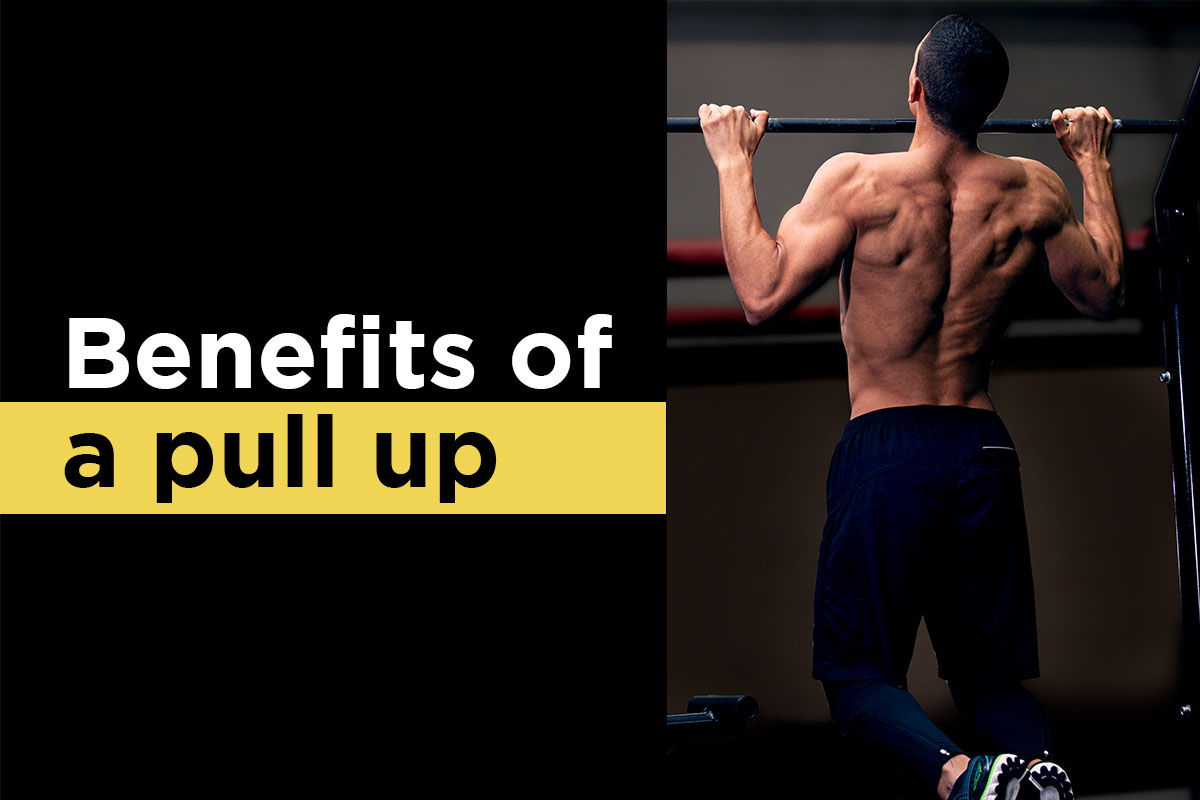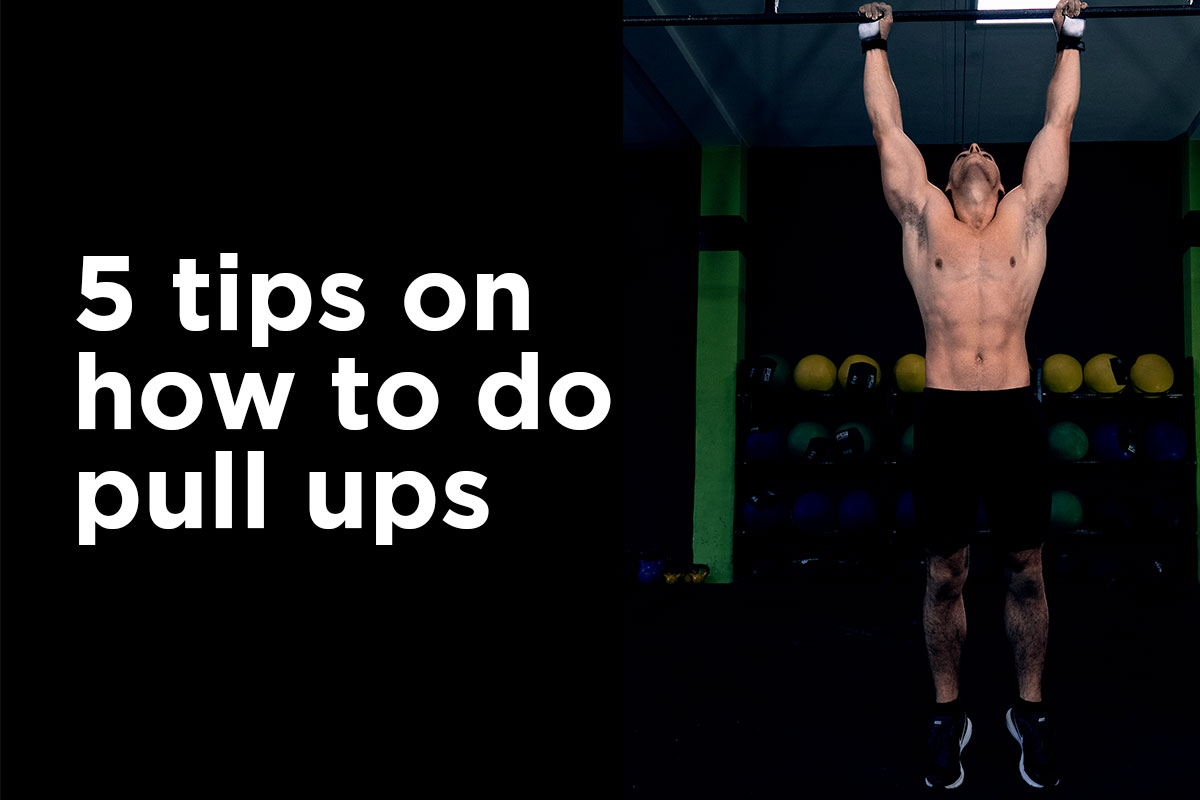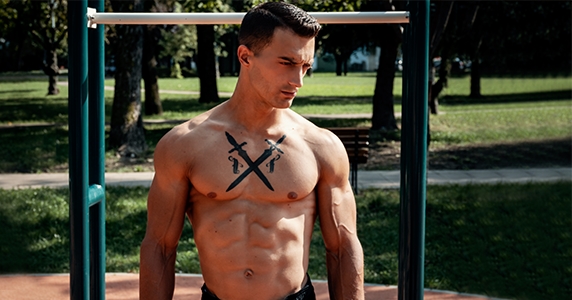How to do pull ups
Learn the basics of the pull up exercise and how to do at least one pull up.

One of the most popular calisthenics exercises, the pull up exercise, is frequently used in sports, recreational exercising, research, as well as in testing upper body strength in certain occupational settings. Most commonly used in calisthenics and street workout, along with the push up, it is highly efficient in building upper body muscle and strength.
It is easy to see the appeal of the pull up exercise. It involves a lot of upper body muscles, including arms, back, and shoulder muscles, and it requires almost no equipment.
However, there is a catch. Considering you are defying gravity while lifting your whole body in an upward movement, it’s safe to say that pull ups fall into the category of hard exercises. This intensity is the key ingredient in building a well developed back and arm muscles, and one can say this is the main benefit of pull ups.
Since struggling with this exercise is a common thing, we’ve picked the top 5 tips on how to do pull ups. Continue reading to see if you got what it takes to do your first full up.
But first, let’s have a look at what muscles are working to get you up that bar and why you should be doing pull ups.
Pull ups muscles in action

In a pull up exercise, you are grabbing the pull up bar above your head and pulling your whole body upward. It’s a compound (multijoint) movement that involves the action of two joints: the elbow and shoulder joint. The shoulder joint is one of the most complex and mobile joints in the body as it requires various muscles working together to create a stable and strong movement, like the one during a pull up.
There are many muscles involved in the pull up, but the biggest muscles that do the most of work include:
Bicep muscle - the biggest muscle on the front side of your upper arm, it activates mostly during the upward phase of the pull up.
Latissimus dorsi - the biggest muscle of the back, it works to control the upward and downward phase of the pull up.
Trapezius - active during both the upward and downward phase of the pull up, this muscle is essential for the proper pull up technique.
Other muscles that are also active include forearm and shoulder muscles, as well as smaller muscles located around the shoulder blade area.
Benefits of a pull up

There is a variety of pull up benefits to choose from and used them as motivation for mastering this exercise:
Pull ups are a great way to build muscle mass, especially if you are a beginner in doing pull ups. Your bodyweight is going to be more than enough to create the necessary resistance your muscles need to grow stronger and bigger.
Pull ups are most definitely a functional movement, meaning they resemble real-life movements and include the same joint and muscle actions as those movements. This means it’s a highly transferable skill that can be used in certain occupational settings, such as law enforcement, military, and firefighting. It can also be used in various sports and activities like climbing ropes and poles, swimming, rowing/paddling, gymnastics, and wrestling.
Pull ups require minimal skill and equipment, unlike many exercises you do in the gym.
Pull ups offer many variations, from simpler to more complex versions. Grip width and orientation, body position, and body movement all play a role in creating different versions of the exercise. These different versions all activate the same muscles but in a slightly different way.
Next, we break down the 5 most important tips on how to do pull ups.
5 tips on how to do pull ups

Learn the movement
There are many variations of a pull up exercise. However, the standard pull up technique is done by using a pronated position of the hands on the bar (palms facing forward), with a shoulder-width (or slightly wider) grip.
The movement should be done in a controlled manner, without swinging or kicking the body or legs. Two main phases constitute the pull up: the upward and downward phase.
Upward phase: From an upright position, standing beneath the pull up bar, grab the bar slightly wider than shoulder-width apart and pull yourself up until your chin is above the bar and parallel to the ground. Pause for a second and begin the downward phase.
Downward phase: Maintaining control of the movement, slowly drop back down in a linear downward path until your elbows are straight.
Find the right setting
This one is pretty simple. All you need is a pull up bar, or any kind of suspending prop like a TRX suspension trainer, or even a towel. The bar must be stable and strong enough to hold your whole body weight.
There are various ways to do pull ups at home and outside while using minimal equipment. If you put a little extra effort into it, you can even make a perfect custom made bar in your backyard.
Build up your strength
The proper technique is important, but it will only get you halfway there. The other half of the work needs to be put into developing upper body strength. This can be done by doing various upper body strength exercises, such as incline pull ups, incline chin ups, negative pull ups, negative chin ups or pull up/chin up hold. Use Madbarz workout creator to combine these exercises in a routine best suited for your fitness level.
Put your back into it
Knowing the movement and having the proper technique is often not the same thing. During a pull up, preparation is the key. Once in a starting position, it’s important to pull the shoulder blades down and back towards each other. This creates necessary stability in shoulder blades and shoulder joints, needed to produce the best possible activation of primary working muscles in the pull up. This is also a safe way to perform the movement without the fear of developing joint instability.
Just go for it
Once you’ve mastered the basics of the technique, it’s time to practice. If the full technique still feels out of reach, there are ways to simplify it by doing slightly modified pull ups for beginners. These versions are great alternatives and will allow for the final transition from practice to execution.
Takeaway
Reaching your first pull up is a great achievement, but don’t stop there. Continue challenging yourself and as time goes by you will progress. Once you feel strong enough, you should test your skill and strength every once in a while to see how much progress you’ve actually made. The numbers you achieve and the strength you’ve gained will make the effort worth your while.
For maximum results, try out one of the 20+ workout plans in the Madbarz Premium.




Post a comment